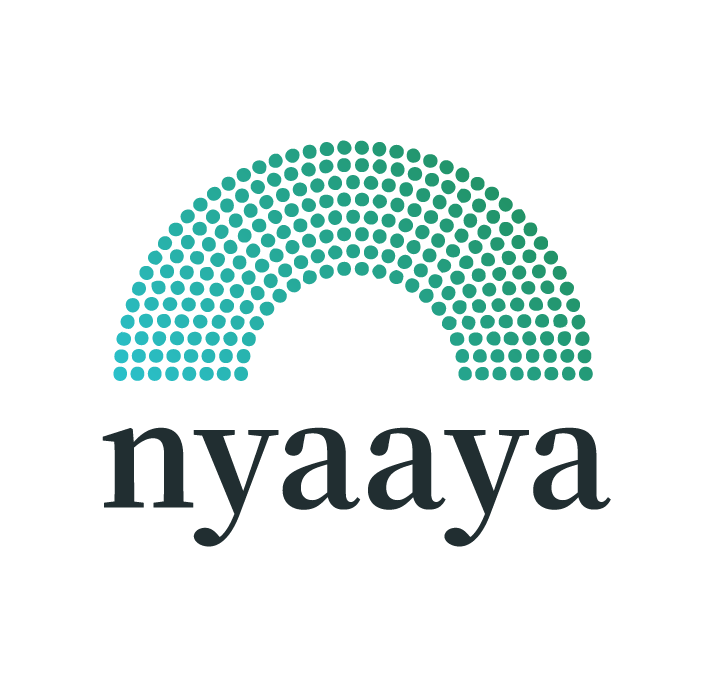By Riddhi Shetty


When a workman is employed for work through a contractor and not directly through an employer, he is engaged in ‘contractual employment.’ A 2015 ICRIER Survey of the Manufacturing sector in Haryana shows that approximately 41% of the labour employed was contractual in nature. Indeed, half of the increase in total employment (from 7.7 million to 13.7 million) between 2000–01 and 2015–16 was built up by contractual workers, as per data from the Annual Survey of Industries (ASI).
In India, Contractual Employment is regulated by the Contractual Labour (Regulation and Abolition) Act, 1970. The Act applies to an establishment or a company employing more than 20 workers on a contractual basis. As per this law, a contractual worker is a workman employed for contractual work through a contractor and not directly through an employer. A contractor is defined as a supplier of contractual labour to the principal employer.
A Principal Employer is someone who controls the establishment or company.
In the case of;
- a factory, it is the owner or occupier or manager of the factory;
- a Mine: it is the owner or the manager of that mine.;
- the Government: The head of the office or department or an officer notified by the government or local authority.
How is contract labour different from direct labour?
Contractual labour is different from direct labour because:
- The principal employer doesn’t directly employ the worker and there is no direct relationship of the PE with the workers’ employment. It is the contractor who hires the worker and is responsible for conditions of employment.
- In contrast to permanent employment, the contract of employment for a contractual worker is for a specific time period and a specific task only.
Where can Contractual Labour be employed?
Contractual Labour cannot be engaged in ‘core activities’ which are necessary to the functioning of the establishment. The engagement must be temporary and not of a continuing nature. This is to ensure that contractual workers are not exploited to perform tasks usually performed by permanent employees.
However, contractual labour can be employed for certain ‘core activities’, including:
a) Sanitation work (sweeping, cleaning, disposal of waste)
b) watching/ warden service including security service
c) Catering services
d) Loading and unloading operations
e) Running of hospitals, educational and training institutions, guest houses, clubs etc..
f) Courier services, if they are not necessary to the establishment
g) Civil, Construction works including maintenance
h) Gardening and maintenance of lawns, etc.
i) House-keeping and laundry services
j) Transport services, inclusive of Ambulance Services
k) If an activity constitutes as a core-activity of an establishment, but is not continuous in nature.
Duties of the Contractor and a Principal Employer
The law looks at contractual workers differently from regular employees. Hence, the duties of a contractor are different than that of a principal employer.
Wages
The contractor is responsible for the worker, his conditions of employment, and payment of wages.1 The wage period is to be fixed by the contractor and must not exceed one month.
- If the establishment has less than 1000 employees, payment must be done before the 7th day of the last day of the wage period. If the worker’s last day is the 30th of June, the payment must be done by the 7th of August.
- If there are more than 1000 employees, payment can be done before the 10th day of the expiration of the wage period.2
If the contractor fails to pay wages, the principal employer has to pay and he can deduct this amount from the amount payable to the contractor.3 The contractor is also duty-bound to pay bonuses to the contractual workers.4
Essential facilities
With regards to the welfare of the workers, the contractor has a duty to provide essential facilities such as canteens5, restrooms6, drinking water, washing facilities, latrines, urinals7, First Aid facilities8. If he/she fails to provide these, the principal employer has to provide for them.9 With regards to Inter-State Migrants, the contractor must issue a passbook in the name of the worker and ensure the employee’s return after employment [Section 12]. In case the migrant worker is displaced to a lower-paying position, the contractor is duty-bound to compensate him/her by paying a ‘displacement allowance.’ This is to be equal to 75 rupees or 50 % of the monthly wages [Section 14]. The contractor also has to provide the worker with a journey allowance [Section 15].
For accountability, the contractor has to maintain the following registers: i) Register of persons employed ii) Muster roll iii) Register of wages iv) Register of deductions for damage or loss v) Register of fines vi) Register of advances vii) Register of overtime.10
Duties of a Principal Employer
While hiring contractual workers, the employer has to:
- Register the establishment to hire contractual workers.
- Hire workers only from licensed contractors.
In a situation where either of these two conditions is not satisfied, the workman employed will not be considered a contractual labourer and will be considered to have been employed directly by the employer.11 The employer also has a duty to ensure that the Contractor complies with applicable labour laws.
Essential facilities
It is the responsibility of the principal employer to ensure that a factory has a general policy on health and safety for the workers. The employer must ensure cleanliness, ventilation and temperature, adequate space, drinking water, latrines, and urinals. He/she must also provide facilities for washing & sitting, First Aid, Canteens, lunchrooms, and Creches.12 For construction workers, the Building and Other Construction Workers Act, 1996 provides for similar essential facilities. The Building and Other Construction Workers’ Cess Act, 1996 puts the responsibility on the employer to contribute towards the BOCW fund.
The Principal Employer has to maintain a register of contractors, a register to record the work performed, wages paid, receipts etc.13. The employer must put up notices showing the place and time of disbursement of wages, rate of wages, hours of work, wage period, dates of payment of wages, and date of payment of unpaid wages. Further, these notices must be put up in the premises in a language understood by a majority of the contract labourers.14
Rights of the Contractual Employee
Working Hours
A contractual employee can be made to work for only 48 hours a week, and 9 hours a day.15 In case of overtime, he/she is entitled to a wage twice the ordinary rate. The period of work hours must be notified to the workers.16 If a contractual worker has worked for a period of 240 days or more, he/she is entitled to annual leave with wages, with one day leave for every 20 days of work.17
Safety and Health
In line with the duties of the employer, contractual factory workers have the right to i) obtain information relating to health and safety at work ii) receive training given for health and safety at work.18
Social Security
Contractual workers are covered under the Employees’ State Insurance Act, 1948 and entitled to social security cover if they draw up to Rs.15,000/- in monthly wages.19 The employer has to register with the Employee State Insurance (ESI) corporation and is responsible to insure the workers. In the ESI scheme, the employer contributes 4.75% of the wages payable to employees, while the employee contributes 1.75% of his/her wages. Workers earning less than Rs. 137/- a day as daily wages are exempted from payment of their share of contribution. Workers under the scheme can avail medical benefits, sickness benefits, maternity benefits, disablement benefits and dependant benefits. The Unorganized Workers’ Social Security Act, 2008 provides contractual workers in the unorganized sector with the benefits of Social Security Schemes like Indira Gandhi National Old Age Pension Scheme, Janani Suraksha Yojana, etc. However, registration under the Act is not mandatory and hence the Act hasn’t been implemented properly.
Retirement benefits
After retirement, contractual workers are entitled to provident fund benefits under the Employees’ Provident Funds and Miscellaneous Provisions Act, 1952 20; if they completed five years in employment under a single employer, they are eligible for gratuity under the Payment of Gratuity Act, 1972.
Other benefits
In case a worker is injured in the course of employment but not covered under the ESI scheme, he/she can claim compensation under the Workmen’s Compensation Act, 1923.21 Similarly, if a female contractual worker is not covered under ESI, she can claim maternity leave (26 weeks for birth of first 2 children) with wages under the Maternity Benefit Act, 1961 (provided she worked in an establishment for not less than 80 days in a year prior to the date of her expected delivery).
Abolishment of Contractual Labour
Under Section 10 of the CLRA, the government can abolish contractual labour.22 However, the employer is under no obligation to directly employ the worker as a permanent employee on abolition of contractual labour. If the employment contract is genuine, the contractual workers will not be absorbed as employees of the establishment or company; but if the contract is a ‘sham’, then the contractual workers will be absorbed as permanent workers. Such a policy indicates that without the contractor there is no primary tie between the principal employer and the worker; in comparison to a direct employee.
Challenges in the face of COVID?
In recognition of the pandemic, the Ministry of Labour & Employment issued an advisory requesting establishments to not terminate contractual workers and ensure payment of their wages.23 Since it is a nonbinding advisory, employers are still well within their power to terminate a contractual worker.
Hence, the COVID situation has worsened conditions of insecurity that characterize contractual employment. This is made worse by the fact that the protection accorded to these workers is ‘basic’ in comparison to the safety net of provisions for permanent employees. For instance, contractual workers cannot raise their own cause for regularisation of labour, as they fall outside the definition of ‘workmen’ per the Industrial Disputes Act, 1947. As States prepare to lift the lockdown, contractual workers have to return to workplaces with a heightened sense of uncertainty — both of health and poverty. Additional safeguards that ensure their health, safety, and socio-economic conditions must be implemented to remedy the situation.
Ridhi Shetty is a student at NALSAR University of Law, Hyderabad and a member of Kautilya society, an initiative of Vidhi Centre for Legal Policy. Views are personal.
- S.21, CLRAA, 1970.[↩]
- S.4, Payment of Wages Act, 1936.[↩]
- S.3, Payment of Wages Act, 1936.[↩]
- The Payment of Bonus Act, 1965[↩]
- S. 16, CLRAA, 1970.[↩]
- S.17, CLRAA 1970.[↩]
- S.18 CLRAA 1970.[↩]
- S.19 CLRAA 1970.[↩]
- S.21 CLRAA 1970.[↩]
- S.29, CLRAA 1970.[↩]
- Sections Food Corporation of India Workers Union v Food Corporation of India and Others, 1992 LLJ (Guj); S.7- S. 12, CLRAA 1970.[↩]
- The Factories Act, 1948; S.11–19, S. 43–47.[↩]
- S.13A, Payment of Wages Act, 1936.[↩]
- S.29 CLRA.[↩]
- S.54, The Factories Act, 1948.[↩]
- S. 61, The Factories Act, 1948.[↩]
- Chapter VIII, The Factories Act, 1948.[↩]
- S. 111A, The Factories Act, 1948.[↩]
- S. 9 (iii), Employees’ State Insurance Act, 1948.[↩]
- M/S Pawan Hans Limited & Ors. v Aviation Karmachari Sanghatana & Ors.Civil Appeal №353 of 2020.[↩]
- State of Maharashtra v Mahadeo Krushna Waghmore, 1994 LLR 950.[↩]
- Steel Authority of India v National Union Water Front, AIR 2001 SC 3527.[↩]
- Order dated 29/03/2020, Home Secretary, the Ministry of Home Affairs and the Government of India, under S 10(2)(1) of the Disaster Management Act, 2015; Rohit Jain, Coronavirus Outbreak: Central Government Advises Employers Not to Terminate Employees, Bloomberg Quint, 23rd March, 2020.[↩]


